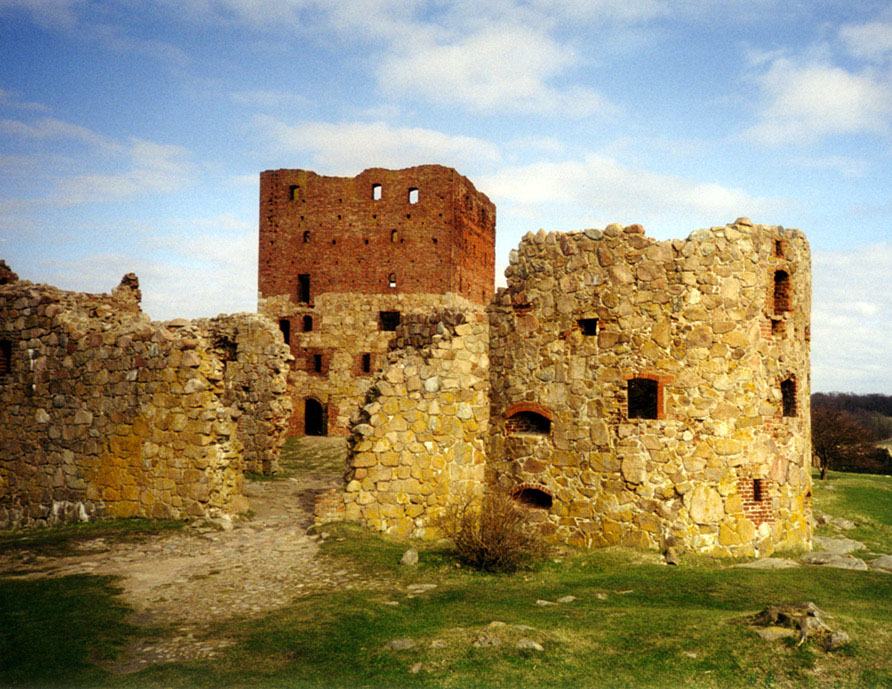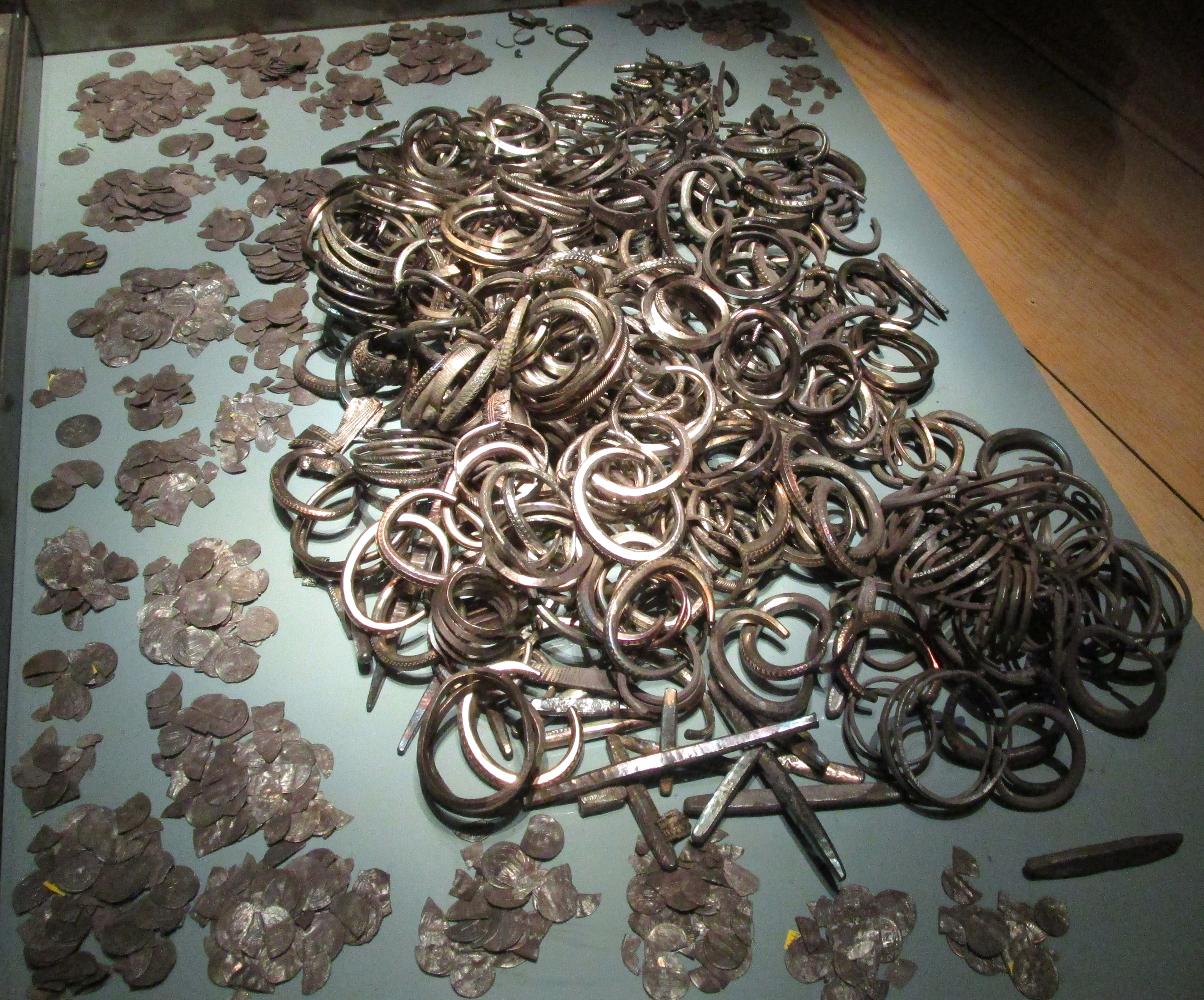|
St. Peter's Church, Bornholm
St. Peter's Church () is a Romanesque parish church some 6 km east of Aakirkeby on the Danish island of Bornholm. It is thought to be the oldest church on the island. History The church is thought to be the oldest on Bornholm, dating from the 10th or the 11th century. The earliest written reference was in 1429. There are indications that the chancel is the oldest part of the building and that it probably stood alone for a period.Otto Norn, C. G. Schultz, Erik Skov, "S. Peders Kirke" : Bornholms Nørre Herred, Danmarks Kirker, Bornholm, Nationalmuseet, Gad, 1954, pp. 556–572. Architecture The building consists of a Romanesque nave, chancel and |
Romanesque Architecture
Romanesque architecture is an architectural style of medieval Europe that was predominant in the 11th and 12th centuries. The style eventually developed into the Gothic style with the shape of the arches providing a simple distinction: the Romanesque is characterized by semicircular arches, while the Gothic is marked by the pointed arches. The Romanesque emerged nearly simultaneously in multiple countries of Western Europe; its examples can be found across the continent, making it the first pan-European architectural style since Imperial Roman architecture. Similarly to Gothic, the name of the style was transferred onto the contemporary Romanesque art. Combining features of ancient Roman and Byzantine buildings and other local traditions, Romanesque architecture is known by its massive quality, thick walls, round arches, sturdy pillars, barrel vaults, large towers and decorative arcading. Each building has clearly defined forms, frequently of very regular, symmetrical ... [...More Info...] [...Related Items...] OR: [Wikipedia] [Google] [Baidu] |
Parish Church
A parish church (or parochial church) in Christianity is the Church (building), church which acts as the religious centre of a parish. In many parts of the world, especially in rural areas, the parish church may play a significant role in community activities, often allowing its premises to be used for non-religious community events. The Church architecture, church building reflects this status, and there is considerable variety in the size and style of parish churches. Many villages in Europe have churches that date back to the Middle Ages, but all periods of architecture are represented. Catholic Church Each diocese (administrative unit, headed by a bishop) is divided into parishes. Normally, a parish consists of all Catholics living within its geographically defined area. Within a diocese, there can also be overlapping parishes for Catholics belonging to a particular rite, language, nationality, or community. Each parish has its own central church called the parish church, ... [...More Info...] [...Related Items...] OR: [Wikipedia] [Google] [Baidu] |
Aakirkeby
Aakirkeby or Åkirkeby is a town in Denmark with a population of 2,117 (1 January 2024). It is the third largest town on the island of Bornholm in the Baltic Sea. It was the main town of the now abolished Aakirkeby Municipality. The town is situated in the middle of the southern half of Bornholm, between Rønne Rønne () is the largest town on the Denmark, Danish island of Bornholm in the Baltic Sea. It has a population of 13,675 (1 January 2025). It was a municipality in its own right from 1970 until 2002, when Bornholm was a Bornholm County, county (D ... and Nexø. The Danish TV-station TV2 has a local office (TV2/Bornholm) in Aakirkeby. Aakirkeby could be translated to "Stream Church town", as Å or Aa is a stream. When speaking of the church alone, which dates from the mid-12th century, it is separated into two words: Aa Kirke. Myreagre Mølle, a whitewashed windmill built in 1865, is located 3 km to the east of Aakirkeby on the road to Nexø. [...More Info...] [...Related Items...] OR: [Wikipedia] [Google] [Baidu] |
Bornholm
Bornholm () is a List of islands of Denmark, Danish island in the Baltic Sea, to the east of the rest of Denmark, south of Sweden, northeast of Germany and north of Poland. Strategically located, Bornholm has been fought over for centuries. It has usually been ruled by Denmark, but also by Sweden and by Free City of Lübeck, Lübeck. The ruin of Hammershus, at the northwestern tip of the island, is the largest medieval fortress in northern Europe, testament to the importance of its location. Bornholm and Ertholmene comprise the last remaining Danish territory in Skåneland east of Øresund, having been Treaty of Roskilde, surrendered to Sweden in 1658, but Treaty of Copenhagen (1660), regained by Denmark in 1660 after Bornholm uprising, a local revolt. The island is known as ("sunshine island") because of its weather and ("rock island") because of its geology, which consists of granite, except along the southern coast. The heat from the summer is stored in the rock formation ... [...More Info...] [...Related Items...] OR: [Wikipedia] [Google] [Baidu] |
Chancel
In church architecture, the chancel is the space around the altar, including the Choir (architecture), choir and the sanctuary (sometimes called the presbytery), at the liturgical east end of a traditional Christian church building. It may terminate in an apse. Overview The chancel is generally the area used by the clergy and choir during worship, while the congregation is in the nave. Direct access may be provided by a priest's door, usually on the south side of the church. This is one definition, sometimes called the "strict" one; in practice in churches where the eastern end contains other elements such as an ambulatory and side chapels, these are also often counted as part of the chancel, especially when discussing architecture. In smaller churches, where the altar is backed by the outside east wall and there is no distinct choir, the chancel and sanctuary may be the same area. In churches with a retroquire area behind the altar, this may only be included in the broader defi ... [...More Info...] [...Related Items...] OR: [Wikipedia] [Google] [Baidu] |
Apse
In architecture, an apse (: apses; from Latin , 'arch, vault'; from Ancient Greek , , 'arch'; sometimes written apsis; : apsides) is a semicircular recess covered with a hemispherical Vault (architecture), vault or semi-dome, also known as an ''exedra''. In Byzantine architecture, Byzantine, Romanesque architecture, Romanesque, and Gothic architecture, Gothic Architecture of cathedrals and great churches, Christian church architecture, church (including cathedral and abbey) architecture, the term is applied to a semi-circular or polygonal termination of the main building at the liturgical east and west, liturgical east end (where the altar is), regardless of the shape of the roof, which may be flat, sloping, domed, or hemispherical. Smaller apses are found elsewhere, especially in shrines. Definition An apse is a semicircular recess, often covered with a hemispherical vault. Commonly, the apse of a church, cathedral or basilica is the semicircular or polygonal termination to the ... [...More Info...] [...Related Items...] OR: [Wikipedia] [Google] [Baidu] |
Baptismal Font
A baptismal font is an Church architecture, ecclesiastical architectural element, which serves as a receptacle for baptismal water used for baptism, as a part of Christian initiation for both rites of Infant baptism, infant and Believer's baptism, adult baptism. Aspersion and affusion fonts The earliest western fonts are found in the Catacombs of Rome. The fonts of many western Christian denominations that practice infant baptism are designed for baptisms using a non-immersive method, such as aspersion (sprinkling) or affusion (pouring). The simplest of these fonts has a pedestal with a holder for a basin of water. The materials vary greatly, consisting of carved and sculpted stone (including marble), wood, or metal in different shapes. Many fonts are in Octagon, octagonal shape, as a reminder of the new creation and as a connection to the Old Testament practice of circumcision, which traditionally occurs on the eighth day. Some fonts are three-sided as a reminder of the Holy T ... [...More Info...] [...Related Items...] OR: [Wikipedia] [Google] [Baidu] |
Gotland
Gotland (; ; ''Gutland'' in Gutnish), also historically spelled Gottland or Gothland (), is Sweden's largest island. It is also a Provinces of Sweden, province/Counties of Sweden, county (Swedish län), Municipalities of Sweden, municipality, and List of dioceses, deaneries and parishes of the Church of Sweden, diocese. The province includes the islands of Fårö and Gotska Sandön to the north, as well as the Karlsö Islands (Lilla Karlsö, Lilla and Stora Karlsö, Stora) to the west. The population is 61,023 (2024) of which about 23,600 live in Visby, the main town. Outside Visby, there are minor settlements and a mainly rural population. The island of Gotland and the other areas of the province of Gotland make up less than one percent of Sweden's total land area. The county formed by the archipelago is the second smallest by area and is the least populated in Sweden. In spite of the small size due to its narrow width, the driving distance between the furthermost points of the ... [...More Info...] [...Related Items...] OR: [Wikipedia] [Google] [Baidu] |
Frobenius Orgelbyggeri
Frobenius is a Danish firm of organ builders. History Theodor Frobenius was born into a family of organ builders on 7 October 1885 in Weikersheim, Baden-Württemberg. From the age of 13, he trained as an organ builder at August Laukhuff in his home town. He spent four years in the workshop and then another three and a half years as a journeyman with other German organ builders. He met the Danish organ builder A.C. Zachariassen. In 1907, he moved to Aarhus where Zachariassen had just taken over an organ workshop. Frobenius's original plan was to spend only a year or two in Denmark, but ended up settling in the country on a permanent basis after meeting his future wife while working on the renovation of the organ in Viborg Cathedral. Frobenius Orgelbyggeri (Th. Frobenius & Sons / Th. Frobenius & Sønner Orgelbyggeri A/S) was founded in Copenhagen by Theodor Frobenius (1885–1972) in 1909. The firm moved to Lyngby in 1925. Theodor's sons Walther and Erik joined the company in 1944 ... [...More Info...] [...Related Items...] OR: [Wikipedia] [Google] [Baidu] |
List Of Churches On Bornholm
This is a list of church (building), churches on the island of Bornholm in eastern Denmark. , ''Bornholms Museer''. Retrieved 4 October 2012. The list See also * Diocese of Copenhagen * List of windmills on BornholmReferences {{reflist Churches in Bornholm, Lists of churches in Denmark, Bornholm ...[...More Info...] [...Related Items...] OR: [Wikipedia] [Google] [Baidu] |
Churches In Bornholm
Church may refer to: Religion * Church (building), a place/building for Christian religious activities and praying * Church (congregation), a local congregation of a Christian denomination * Church service, a formalized period of Christian communal worship * Christian denomination, a Christian organization with distinct doctrine and practice * Christian Church, either the collective body of all Christian believers, or early Christianity Places United Kingdom * Church, a former electoral ward of Kensington and Chelsea London Borough Council that existed from 1964 to 2002 * Church (Liverpool ward), a Liverpool City Council ward * Church (Reading ward), a Reading Borough Council ward * Church (Sefton ward), a Metropolitan Borough of Sefton ward * Church, Lancashire, England United States * Church, Iowa, an unincorporated community * Church Lake, a lake in Minnesota * Church, Michigan, ghost town Arts, entertainment, and media * ''Church magazine'', a pastoral theology magazine ... [...More Info...] [...Related Items...] OR: [Wikipedia] [Google] [Baidu] |


